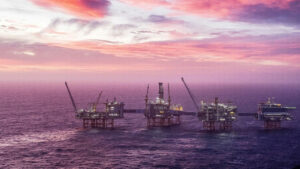Norway pitched on LNG tech, sustainable fuel partnerships
THE Department of Energy (DoE) said it will propose potential partnerships with Norway in sustainable fuels and natural gas technology. “Norway, which has a huge interest in shipping, is a natural ally of the Philippines for biofuels,” Energy Secretary Raphael P.M. Lotilla said at the Norway-Philippines LNG Summit on Monday. Mr. Lotilla cited the strong […]

THE Department of Energy (DoE) said it will propose potential partnerships with Norway in sustainable fuels and natural gas technology.
“Norway, which has a huge interest in shipping, is a natural ally of the Philippines for biofuels,” Energy Secretary Raphael P.M. Lotilla said at the Norway-Philippines LNG Summit on Monday.
Mr. Lotilla cited the strong interest in sustainable aviation fuel (SAF) and “cleaner fuels” for shipping.
“That is an important area where Norway and the Philippines can do business and research together,” he said.
According to the DoE, SAF is an “environmentally sustainable and chemically identical alternative to fossil fuel-based aviation fuel.” SAF can be manufactured from forestry and agricultural waste and used oils.
Mr. Lotilla said that the Philippines has much to learn from Norway on the use and management of natural resources, noting Norway’s North Sea energy projects and the revenue they produce.
Norway can provide insights “that will be useful for the Philippines, especially in relation to our indigenous gas resources,” Mr. Lotilla said.
He said that Norway has shown that “the responsible management of natural resources requires clear regulation, prudent fiscal policy, and a commitment to continuously upgrading the skills of our workforce.”
Meanwhile, he touted the role of liquefied natural gas (LNG) as transition fuel, not only for power generation but also for complementing renewable energy sources like solar and wind.
“Today, LNG is stepping in to play a crucial role in our energy value chain. With two LNG terminals in Batangas Bay nearing full commercial operations, we are preparing to ensure the reliability of our gas-fired power plants,” Mr. Lotilla said.
Currently, the Philippines is expected to have a combined capacity of eight million tons per annum once the LNG terminals become fully operational.
The DoE said that the facilities may also serve as a redundancy mechanism by offering an alternative fuel source for over 4,500 megawatts of generation capacity by 2025.
Norwegian Ambassador to the Philippines Christian Halaas Lyster said Norway has developed “world-class technology” within the LNG industry and can support the Philippines in its energy transition.
Compared to oil and coal, LNG offers opportunities to significantly reduce carbon emissions, he said.
“We can support the Philippines in the decarbonizing agenda and energy transition by proven LNG technology for years to come,” he said.
The Philippines is aiming to increase the share of renewable energy in the power mix to 35% by 2030 and 50% by 2040. — Sheldeen Joy Talavera
















